
Aphasia and Other Acquired Neurogenic Language Disorders: A Guide for Clinical Excellence.
First Edition
Brooke Hallowell
Details: 709 pages, B&W With Color Insert, Softcover, 7" x 10"
ISBN13: 978-1-59756-477-9
© 2017 | Available
A new edition of this text is available.
Covering an array of evidence-based content, including aphasia, traumatic brain injury, dementia, and language in aging, Aphasia and Other Acquired Neurogenic Language Disorders: A Guide for Clinical Excellence is a must-have textbook for clinicians and students studying to be speech-language pathologists. This clinical guide strategically addresses scientific foundations, service delivery, international and multicultural perspectives, assessment, and treatment.
Organized to maximize adult learning, the book is adaptable for multiple pedagogic methods for classroom-based courses, independent study, and online learning. Aphasia and Other Acquired Neurogenic Language Disorders: A Guide for Clinical Excellence provides clinicians and students a clear pathway for quality and effectiveness in clinical practice.
Key Features
- A rigorous approach to the art and science of clinical practice, integrating diverse theoretical perspectives for a global readership
- Guidance on advocacy, ethics, reimbursement, legal aspects, and counseling
- An emphasis on person-centered, empowering approaches to maximize life participation
- Extensive assessment resources and a process analysis approach for analyzing communicative performance and interpreting assessment results
- How-to content on more than 50 intervention approaches
- Diagrams, charts, illustrations, summary tables, a substantial glossary, a detailed index, and rich up-to-date references
- Complementary online materials with links to videos and other teaching/learning resources
- Systematic queries that enliven clear learning objectives
Pedagogy Includes
- Extensive assessment resources and a process analysis approach for analyzing communicative performance and interpreting assessment results
- Clear and concise clinical examples to ensure relevance of information based on realistic scenarios
- Systematic queries that enliven clear learning objectives
- Diagrams, charts, illustrations, summary tables, a substantial glossary, a detailed index, and rich up-to-date references
- Key terms in bold within the chapter and listed in a glossary
Ancillary materials available via PluralPlus companion website
- PowerPoint materials to guide discussions pertaining to content in each chapter
- Additional discussion points and learning activities for each chapter designed to encourage a learn-by-doing rather than just a learn-by-reading modes
- Editable in-class handouts to guide discussions and hands-on learning activities
- A terminology guide with sound files for practice with pronunciation and definitions
- Links to video examples and additional helpful online resources
- A test bank that includes multiple-choice, fill-in-the blank, matching, true/false, short-answer, and essay items, all cross-referenced to the content areas addressed
- A concise review of pedagogic methods for instructors, aimed at enhancing engaged learning
Reviews
"Named to Doody's Core Titles in the Health Sciences - Speech, Language & Hearing 2020 list."
—Doody's (May 2020)
"The author's unique "voice" comes through here, as does her passion and enthusiasm for clinical aphasiology. . . I don't know of any other textbook that structures the active learning experience for the reader in the way this one does. If readers truly engage with the learning opportunities provided, their depth of knowledge in many ways."
—Barbara Shadden, PhD, Professor Emerita, Department of Communication Disorders, University of Arkansas
"This book is a book so well written scientifically and yet so poetic and artistic, reflecting the art and the science of our profession, applicable to clinical practice as well as laboratory research."
—Hyanghee (Hope) Kim, PhD, Professor, Department of Speech-Language Pathology, Younsei University, Korea
"Professor Hallowell excels through her friendly yet scientifically rigourous style. Her rich experience as both clinician and scholar are evident in her writing. The book kindles researchers' minds and empowers clinicians."
—N. Shivashankar, PhD, Professor and Head, Department of Speech Pathology and Audiology, National Institute of Mental Health and Neurosciences, India
"This is a thoroughly up-to-date and comprehensive text in aphasia. It is loaded with solid information about diagnosing and treating neurogenic communication disorders, information on outcome measurement, guidelines for best practices, and written in a reader-friendly style. Serious clinicians will want to read this book, and keep it close as a crucial reference throughout their practice-lifetimes."
—Audrey L. Holland, PhD, Regents' Professor Emerita University of Arizona; Research Director, Adler Aphasia Center Maywood NJ (2016)
"**Description** This exhaustive review of acquired neurogenic language disorders covers aphasia, right brain, TBI, and dementia. It provides a broad range of information from theoretical concepts to clinical applications, including important aspects of the clinical process based on evidence-based practice as well as practical, useful information such as billing.
**Purpose** The intent is to go beyond assessment and treatment of neurogenic disorders. The author includes aspects of the WHO's model of body structure and function, quality of life, multicultural issues, ethical issues, and evidence-based practice. This book is phenomenal and could be used across many courses for graduate students.
**Audience** The intended audience is students in speech-language pathology who wish to work in the medical arena. It also would be a great reference for working clinicians. This book is right on target for graduate students. Dr. Hallowell is very much an authority, with years of experience, who has published extensively in these areas.
**Features** The book covers all aspects of the process of assessment and intervention, related to the neurological disorders of aphasia, right brain, TBI, and dementia. It includes a strong historical perspective on these deficits as well as descriptions of current neuroanatomy and neurophysiology. It covers many aspects of intervention such as quality of life issues that many books do not address. The book's main strength is that it is comprehensive. The only possible criticism is that this comprehensiveness could be seen as rather daunting by students. But it is a book many would want to subsequently keep for their professional libraries. There is an accompanying website, which would be of special interest to instructors.
**Assessment** This book is amazing. It is extremely thorough and, to my knowledge, far exceeds the offerings I have considered in the past, such as Aphasiology: Disorders and Clinical Practice, 2nd edition, Davis (Pearson, 2006), and 'Brain-Based Communication Disorders, LaPointe et al. (Plural Publishing, 2010). It is also much more user friendly than Language Intervention Strategies in Aphasia and Related Neurogenic Communication Disorders, 5th edition, Chapey (Lippincott Williams & Wilkins, 2008).5 STARS!"
—Paul A Dagenais, Ph.D., University of South Alabama, in Doody's (August 2016)
"This text contains eight sections and 33 clear, informative, and insightful chapters. Most chapters are also complemented by downloadable student and instructor resources. Each chapter opens with clear learning objectives and concludes with well-considered learning and reflection activities. This text therefore offers significant value for money. The general structure of the text is fairly standard, moving from foundations and the nature of aphasia and cognitive communication disorders in conditions such as traumatic brain injury, right hemisphere disorder, and dementia, through to assessment, and then general principles of intervention, followed by specific intervention approaches. . . . Even within chapters that explore familiar topics, such as the ICF and its application to aphasia and cognitive communication, assessment tools and methods, and theories and approaches to intervention, Hallowell offers unique perspectives through combining discussion of current research with insights gained from clinical experience. These insights help the text achieve its aim of promoting the idea of an excellent clinician by providing information that few other textbooks draw explicit attention to."
—Dr. Christopher Plant, in JCPSLP (November 2016)
What Is Special About this Book
Acknowledgments
About the Author
Section I. Welcome and Introduction
Chapter 1. Welcome to the Fantastic World of Research and Clinical Practice in Acquired Neurogenic Cognitive-Linguistic Disorders!
Chapter 2. Becoming the Ultimate Excellent Clinician
Chapter 3. Writing and Talking About People With Disabilities
Section II. Foundations for Considering Acquired Neurogenic Language Disorders
Chapter 4. Defining and Conceptualizing Aphasia
Chapter 5. The WHO ICF and Its Relevance to Acquired Neurogenic Communication Disorders
Chapter 6. Etiologies of Acquired Neurogenic Language Disorders
Chapter 7. Neurophysiology and Neuropathologies Associated With Acquired Neurogenic Language Disorders
Chapter 8. Neuroimaging and Other Instrumentation
Chapter 9. Language in the Context of Aging
Section III. The Nature of Neurogenic Disorders of Cognition and Language
Chapter 10. Syndromes and Hallmark Characteristics of Aphasia
Chapter 11. Cognitive-Communicative Disorders Associated With Traumatic Brain Injury
Chapter 12. Cognitive-Communicative Disorders Associated With Right Hemisphere Syndrome
Chapter 13. Cognitive-Communicative Disorders Associated With Dementia and Other Neurodegenerative Conditions
Section IV. Delivering Excellent Services
Chapter 14. Contexts for Providing Excellent Services
Chapter 15. Engaging Proactively in Advocacy and Legal and Ethical Concerns
Chapter 16. Global Aspects of Clinical Aphasiology
Section V. Assessment
Chapter 17. Best Practices in Assessment
Chapter 18. Psychometric Aspects of Assessment and Assessment Processes
Chapter 19. Problem-Solving Approaches to Differential Diagnosis and Confounding Factors
Chapter 20. Tests, Scales, and Screening Instruments
Chapter 21. Discourse Sampling and Conversational Analysis
Chapter 22. Documenting Assessment Results and Considering Prognosis
Section VI. Theories and Best Practices in Intervention
Chapter 23. Best Practices in Intervention
Chapter 24. Theories of Intervention
Section VII. General Treatment Approaches
Chapter 25. General Approaches for Enhancing Cognitive-Linguistic Abilities
Chapter 26. Facilitating Communication in People With Dementia
Chapter 27. Counseling and Life Coaching
Chapter 28. Complementary and Integrative Approaches
Section VIII. Specific Treatment Approaches
Chapter 29. Promoting Compensatory Strategies in Conversation
Chapter 30. Enhancing Overall Expressive Language
Chapter 31. Improving Word Finding and Lexical Processing
Chapter 32. Improving Syntax
Chapter 33. Improving Reading and Writing
Glossary
References
Index
Purchasers of this book receive complimentary access to supplementary materials (listed below) hosted on a PluralPlus companion website.
Student Materials:
- Supplemental Learning Activities
- Online Videos
- Chapter Questions
- PowerPoints
- Terms
- Pronunciations and Self-Study Aids
Instructor Materials:
- Class activities
- Instructor's Guide
- Test Bank
To access the materials, log in to the website using the URL located inside the front cover of your copy of Aphasia and Other Acquired Neurogenic Language Disorders: A Guide for Clinical Excellence.
STUDENTS:
To access the student materials, you must register on the companion website and log in using the access code located inside the front cover of your textbook.
INSTRUCTORS:
To access the instructor materials, you must contact Plural Publishing, Inc. to be verified as an instructor and receive your access code.
Email: instructormaterials@pluralpublishing.com
Tel: 866-758-7251 (toll free) or 858-492-1555
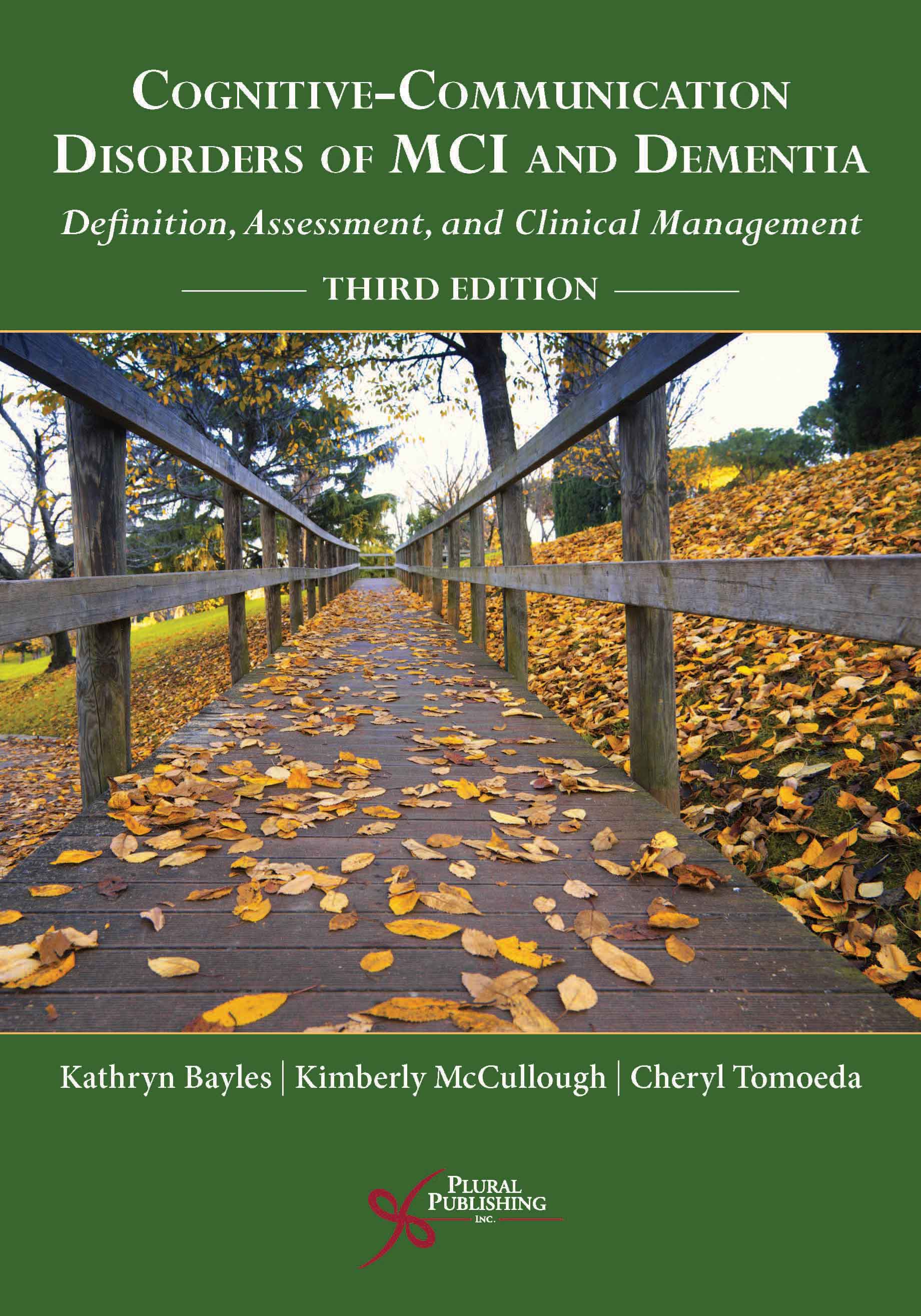
Cognitive-Communication Disorders of MCI and Dementia: Definition, Assessment, and Clinical Management
Third Edition
Kathryn Bayles, Kimberly McCullough, Cheryl K. Tomoeda
Details: 265 pages, B&W, Softcover, 7" x 10"
ISBN13: 978-1-63550-060-8
© 2020 | Available

The Right Hemisphere and Disorders of Cognition and Communication: Theory and Clinical Practice
First Edition
Margaret Lehman Blake
Details: 301 pages, B&W, Softcover, 7" x 10"
ISBN13: 978-1-59756-962-0
© 2018 | Available

Cognitive Rehabilitation Therapy for Traumatic Brain Injury: A Guide for Speech-Language Pathologists
First Edition
Jennifer A. Ostergren
Details: 321 pages, B&W, Softcover, 7" x 10"
ISBN13: 978-1-59756-789-3
© 2018 | Available
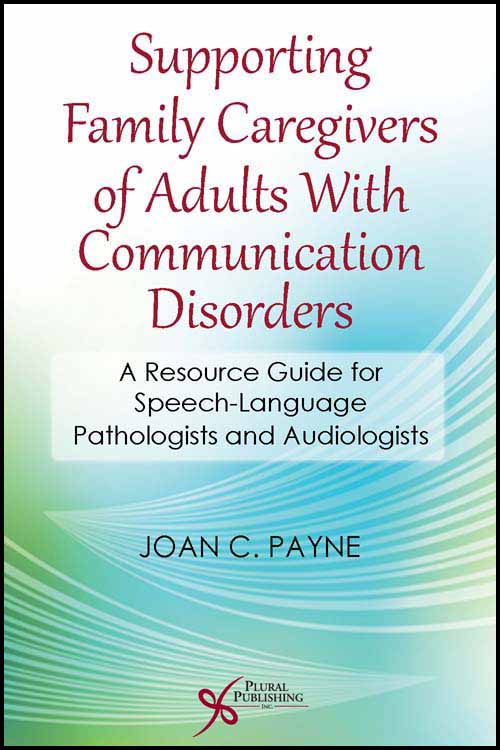
Supporting Family Caregivers of Adults With Communication Disorders: A Resource Guide for Speech-Language Pathologists and Audiologists
First Edition
Joan C. Payne
Details: 304 pages, B&W, Softcover, 6" x 9"
ISBN13: 978-1-59756-502-8
© 2015 | Available
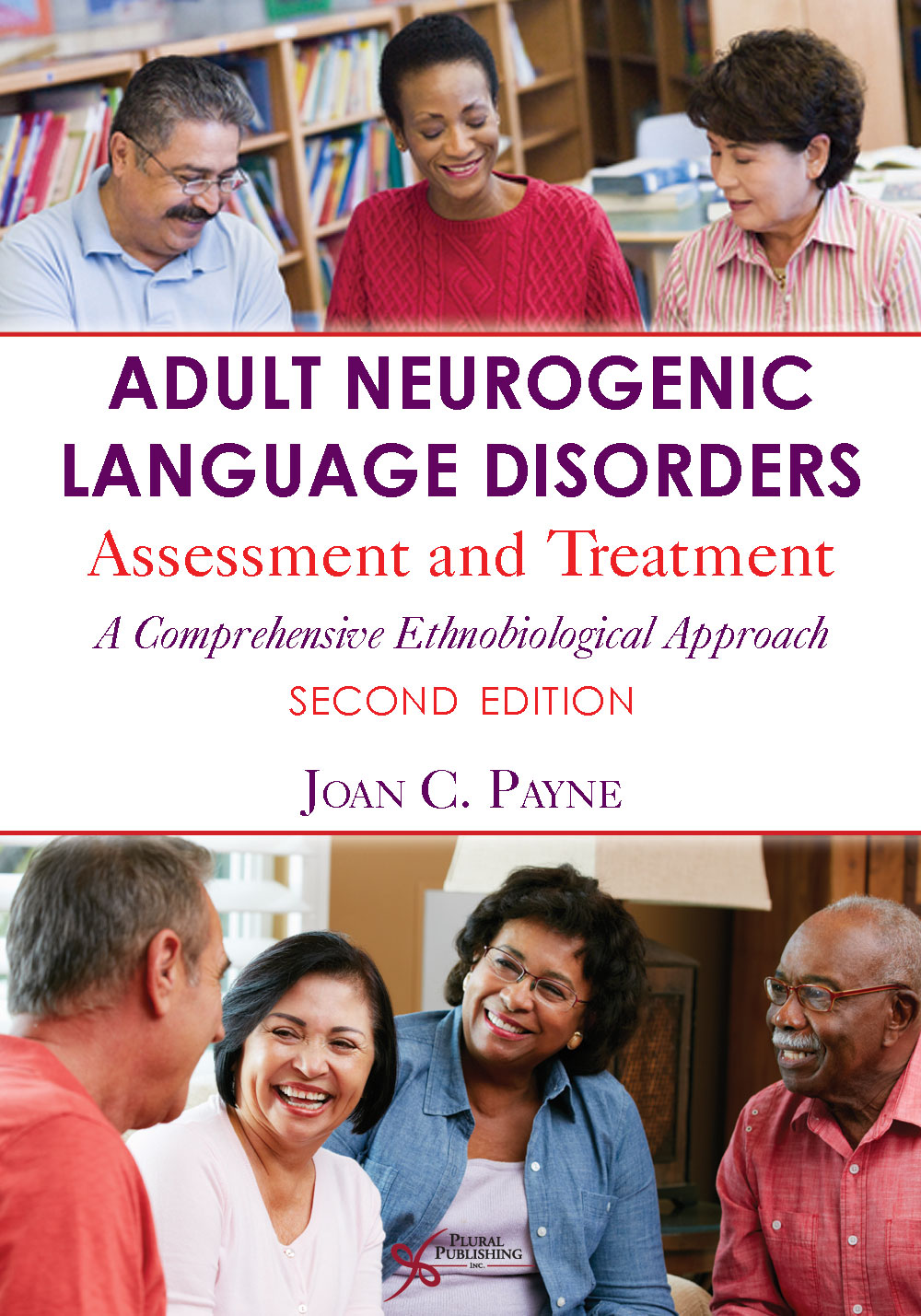
Adult Neurogenic Language Disorders: Assessment and Treatment. A Comprehensive Ethnobiological Approach
Second Edition
Joan C. Payne
Details: 392 pages, B&W, Softcover, 7" x 10"
ISBN13: 978-1-59756-503-5
© 2014 | Available

Neurogenic Communication Disorders: Life Stories and the Narrative Self
First Edition
Barbara B. Shadden, Fran Hagstrom, Patricia R. Koski
Details: 257 pages, B&W, Softcover, 7" x 10"
ISBN13: 978-1-59756-136-5
© 2008 | Available
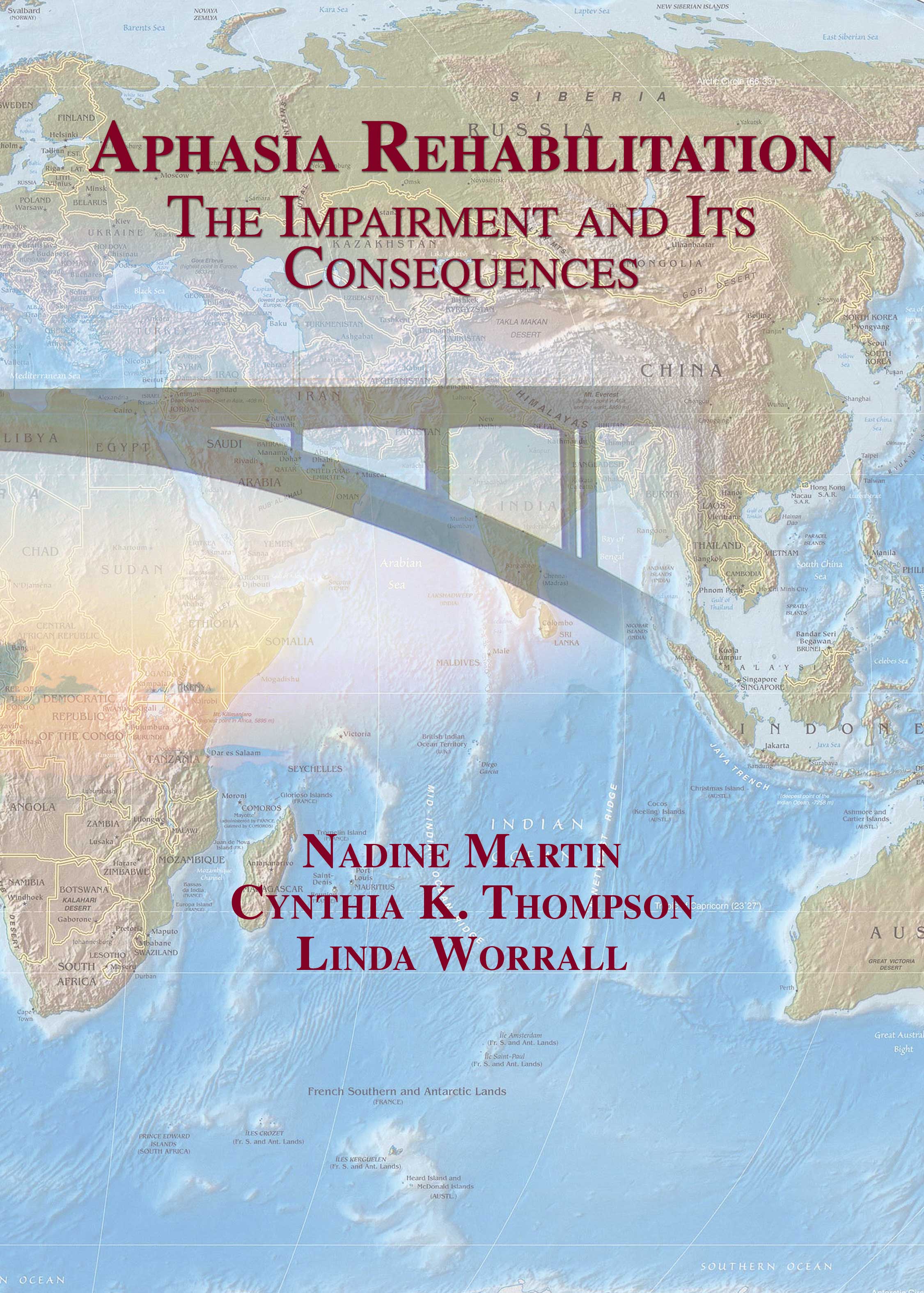
Aphasia Rehabilitation: The Impairment and Its Consequences
First Edition
Nadine Martin, Cynthia K. Thompson, Linda Worrall
Details: 277 pages, B&W, Softcover, 6" x 9"
ISBN13: 978-1-59756-162-4
© 2008 | Available

Neuroimaging in Communication Sciences and Disorders
First Edition
Roger J. Ingham
Details: 243 pages, Full Color, Hardcover, 8.5" x 11"
ISBN13: 978-1-59756-102-0
© 2008 | Available

Group Treatment of Neurogenic Communication Disorders: The Expert Clinician's Approach
Second Edition
Roberta J. Elman
Details: 383 pages, B&W, Softcover, 7" x 10"
ISBN13: 978-1-59756-070-2
© 2007 | Available

Primary Progressive Aphasia and Other Frontotemporal Dementias: Diagnosis and Treatment of Associated Communication Disorders
First Edition
Rene L. Utianski
Details: 188 pages, B&W, Softcover, 7" x 10"
ISBN13: 978-1-63550-160-5
© 2020 | Available
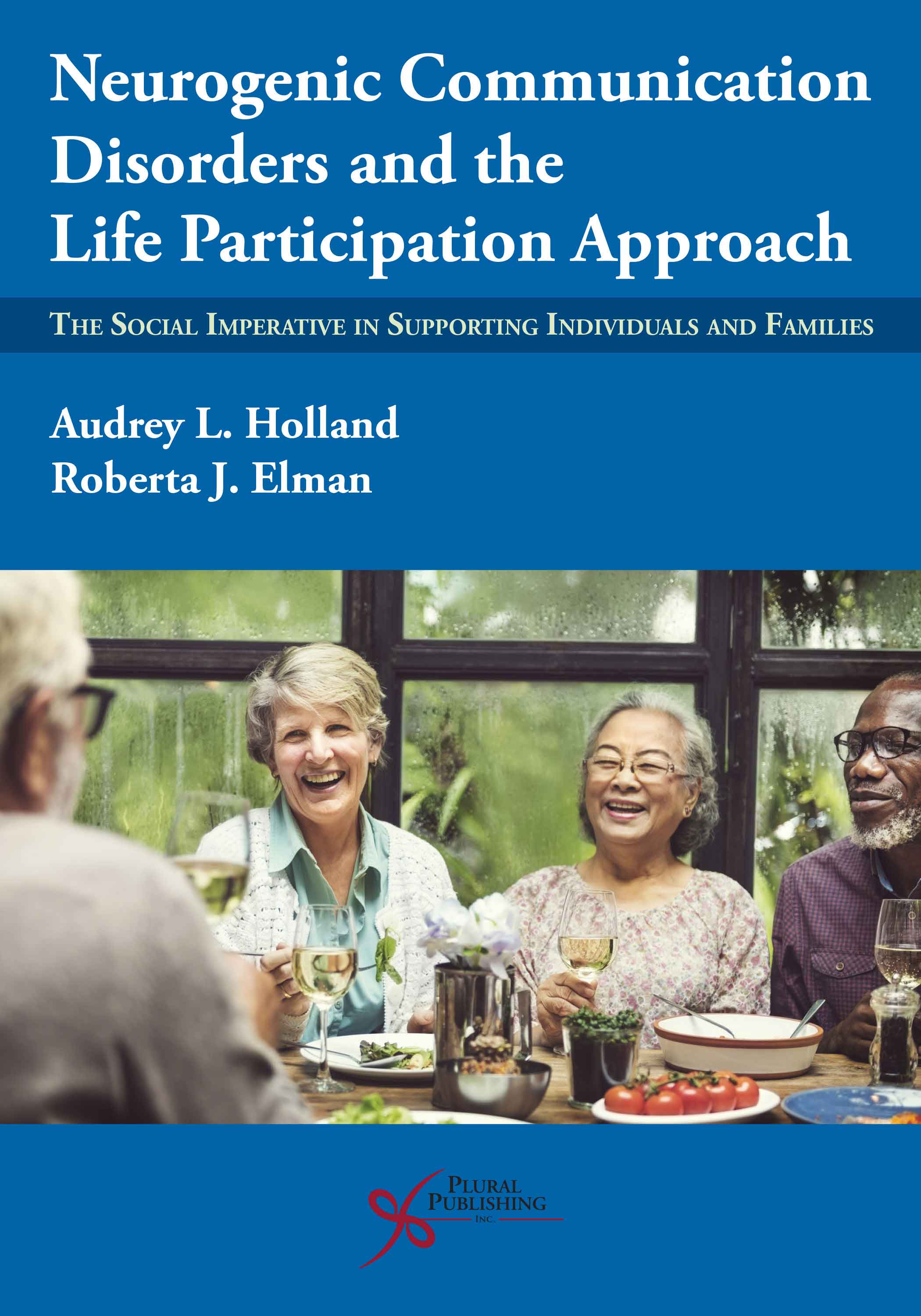
Neurogenic Communication Disorders and the Life Participation Approach: The Social Imperative in Supporting Individuals and Families
First Edition
Audrey L. Holland, Roberta J. Elman
Details: 242 pages, Softcover, B&W, 6" x 9"
ISBN13: 978-1-63550-295-4
© 2021 | Available
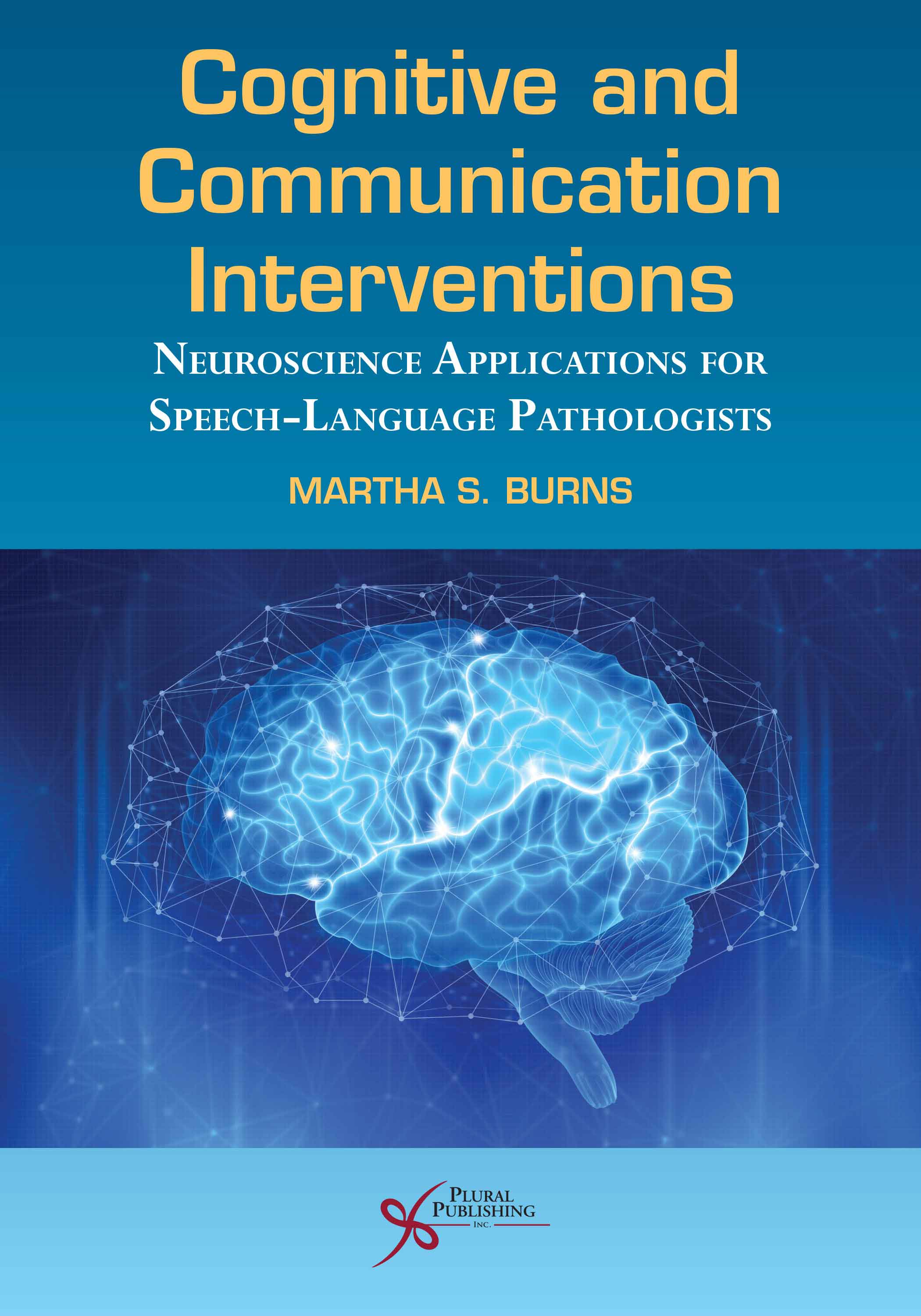
Cognitive and Communication Interventions: Neuroscience Applications for Speech-Language Pathologists
First Edition
Martha S. Burns
Details: 318 pages, B&W, Softcover, 7" x 10"
ISBN13: 978-1-63550-292-3
© 2021 | Available

Semantic Processing and Word Finding Difficulty Across the Lifespan: A Practical Guide for Speech-Language Pathologists
First Edition
Pei-Fang Hung, Lei Sun
Details: 452 pages, B&W, Softcover, 6" x 9"
ISBN13: 978-1-63550-194-0
© 2022 | Available

A Coursebook on Aphasia and Other Neurogenic Language Disorders
Fifth Edition
M.N. Hegde
Details: 426 pages, B&W, Spiral, 8.5" x 11"
ISBN13: 978-1-63550-422-4
© 2024 | Available

